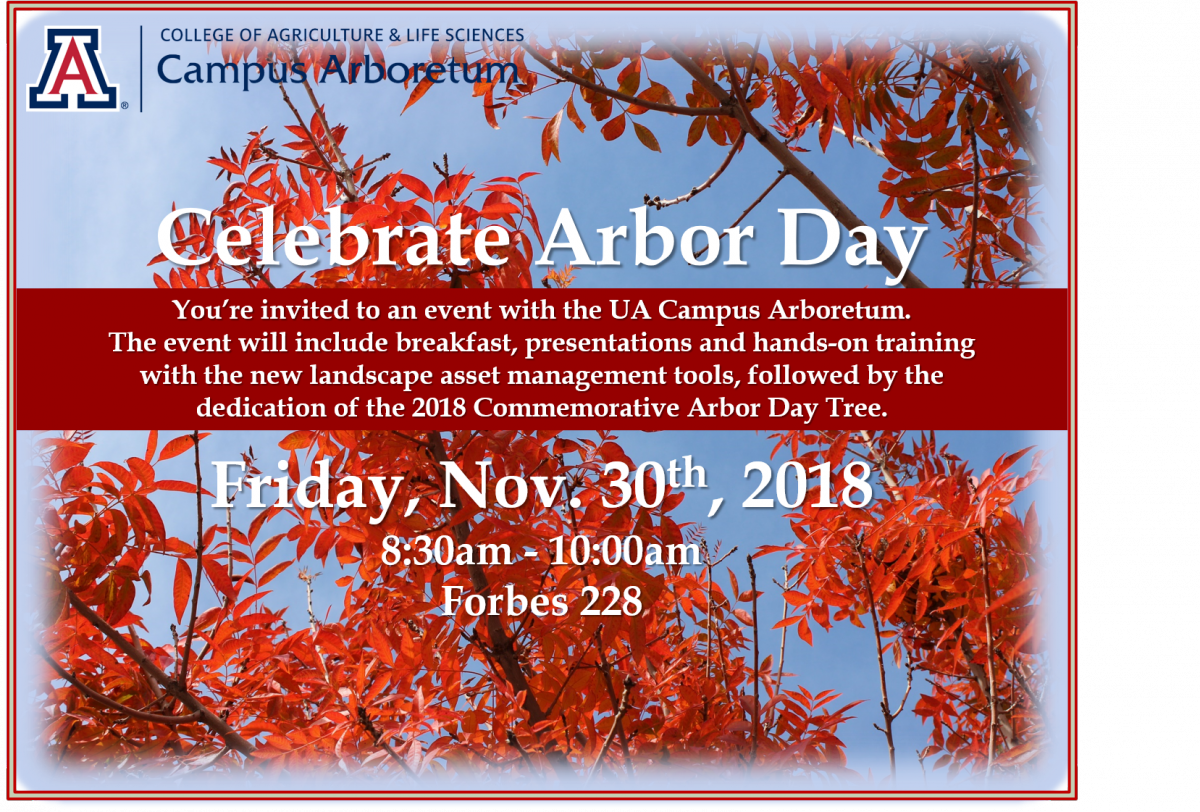When
 The University of Arizona Campus Arboretum program is dedicated to showcasing the campus grounds as a model for the community. It embodies heritage in its majestic and stately old trees and principles of sustainability relevant for building resilient, livable communities wven when resources are limited and climate is changing. To achieve this lofty goal, it is necessary for the Campus Arboretum to provide leadership to those at the university with primary responsibilty for planning and managing the landscape. Particularly relevant are the Ground Services who provide arborists and grounds personnel to plant, prune, fertilize and irrigate the trees and plants. To support their ability to expertly maintain the grounds, the Campus Arboretum developed a database and landscape asset management tool to record data for all maintenance activities. The tool facilitates grounds managers in recording and planning maintenance tasks, scheduling personnel, identifying needs, and improving care over time based on available data. The data improves accuracy of the Campus Arboretum's public facing data and maps which is referenced for research and education worldwide. The project took several groups of experts three years to complete and the product is a one-of-a-kind system for UA Grounds needs and Campus Arboretum tree care quality.
The University of Arizona Campus Arboretum program is dedicated to showcasing the campus grounds as a model for the community. It embodies heritage in its majestic and stately old trees and principles of sustainability relevant for building resilient, livable communities wven when resources are limited and climate is changing. To achieve this lofty goal, it is necessary for the Campus Arboretum to provide leadership to those at the university with primary responsibilty for planning and managing the landscape. Particularly relevant are the Ground Services who provide arborists and grounds personnel to plant, prune, fertilize and irrigate the trees and plants. To support their ability to expertly maintain the grounds, the Campus Arboretum developed a database and landscape asset management tool to record data for all maintenance activities. The tool facilitates grounds managers in recording and planning maintenance tasks, scheduling personnel, identifying needs, and improving care over time based on available data. The data improves accuracy of the Campus Arboretum's public facing data and maps which is referenced for research and education worldwide. The project took several groups of experts three years to complete and the product is a one-of-a-kind system for UA Grounds needs and Campus Arboretum tree care quality.
The final and most important stage of the project is training of grounds managers who will implement the systems in daily practice. To this end, an event will be hosted, by invitation only, for relevant UA staff and students who will use the tool and provide guidance on future improvements. The event will include a breakfast presentation, an orientation to the system, and hands-on practice on the grounds at Old Main. The event will conclude with a short presentation at the 2018 Arbor Day Commemorative Tree.

